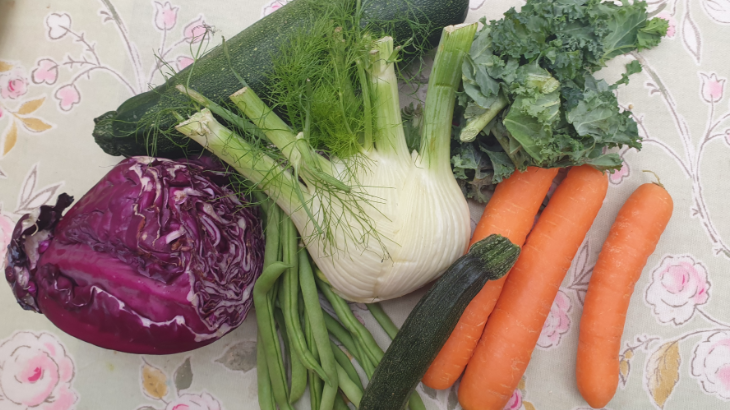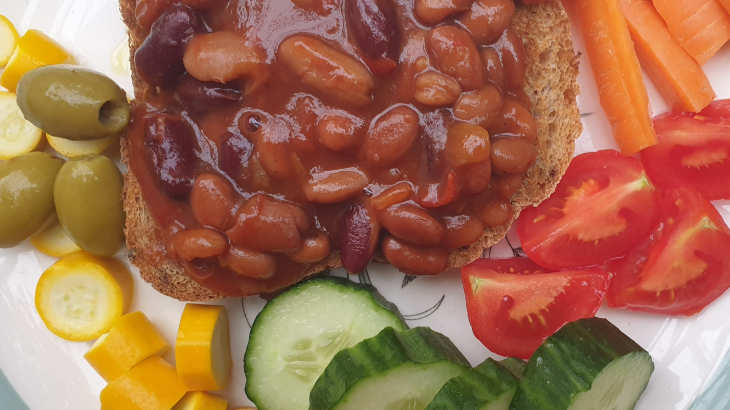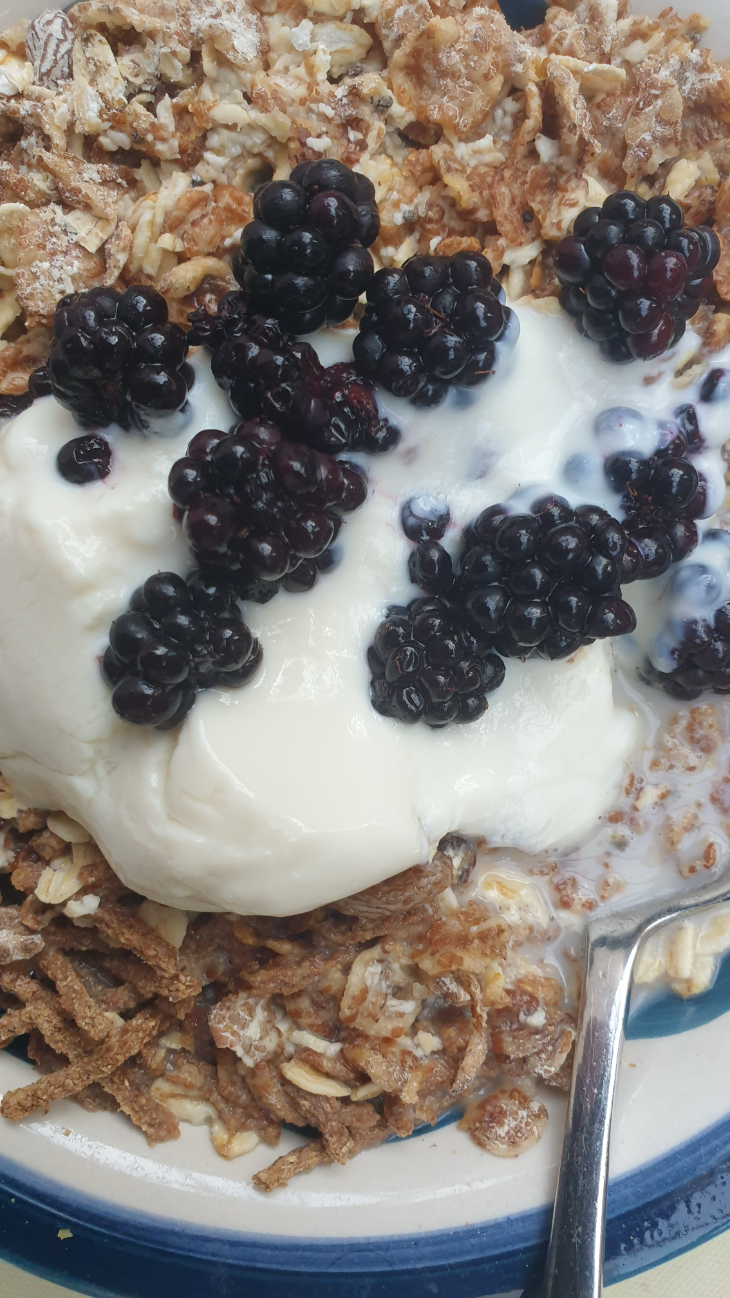Becoming a Vegan

Mick Lorkins, CA-WN Steering Group member and founder of Northamptonshire Woodland Community Volunteers, shares his account of going vegan.
I thought I would document my journey on becoming vegan as it is not quite like switching on and off a lightbulb, it is more of an exploration. The starting point is to understand the reasons you may have decided to become vegan and the rules/limits that you might apply to achieve this lifestyle change.
My brother-in-law and wife have been vegetarian for many years with the main driving force being to prevent cruelty to animals but have added environmental concerns to their reasoning. An alternative view is for the health benefits of a plant-based diet. A book called How Not to Die by Dr Michael Greger and follow up book How to Live Longer are primarily aimed at a USA audience perhaps to avoid the politics that has entwined the environmental net zero argument. These books and videos that can be found on YouTube advocate that you will live longer on a plant-based diet. Writing here on the Climate Action - West Northants website it will come as no surprise that my main driving force to becoming vegan is for the environment.
My journey started a few years ago in 2019 when working and looking for alternatives to eat for lunch. One place was offering a vegan plant-based menu with quite a mix of food on one plate. It was the start of the realisation that Vegan food could be tasty and filling and did not require a portion of meat to be included on the plate. By eating muesli for breakfast and beans on toast for tea I could then boast that I was vegan for one day a week.

My wife and I also started to reduce our meat intake. A dietician suggested that for healthy eating your plate should have ¼ carbohydrates (potatoes, pasta, rice), ¼ meat and ½ vegetables. This sounds easy but putting it into practice is a little more difficult. Generally, meat and carbohydrates are the mainstay of an average UK meal, and vegetables are more of an afterthought – fish and chips, steak and chips, spaghetti Bolognese, ‘would you like peas with it?’
Eating out is also difficult sticking to this 50% vegetables rule but can be easier if cooking at home. You do however need to buy more vegetables and then cook more vegetables and yes eat more vegetables. Once in the routine it is not so difficult. Part of the trick is to serve several types of vegetables and try new ones that might not be on your shopping list such as fennel, mushrooms, courgettes or aubergine. Be slightly more creative on how you achieve this such as air fried Mediterranean vegetables. This is a good starting point to either become vegan or perhaps a smaller step to opt for a healthier lifestyle and moving away from the 50% meat 50% carbohydrates meals.
Whilst I was on this eat less meat eat more veg diet I went to an environmental meeting and the group was discussing what they could do for the environment apart from cleaning their plastic bottles and containers for the recycling bin.
Even now there appears to be limited knowledge on what an individual can do to reduce their carbon footprint and help reduce global warming. I have taken a direct approach to cut out my gas boiler and replace it with an Air Source Heat Pump (which is covered in a different discussion paper) but then thought what more can I do. I joined local environment groups and came across a sign in one place on a fridge door saying ‘no meat’. Most people in the group had been vegan for many years and just assumed that if you were going to do your bit for the environment then this was an easy first step that did not need a large up-front financial investment. For me however it felt like a very big and difficult step to take. We had guests to our house at various occasions and it just appeared to be an inconvenience and you ask your guests a series of questions like, so do you eat fish and do you eat eggs or do you take milk in your tea, what about honey?
Recently there have been a series of reports around the world reporting Canada is burning, Australia is burning or places you might fly out to around the Mediterranean are flooding or burning. Stories of people coming out of their hotels and ending up sheltering in the sea. As a result I reflected that although we can still point the finger at others to say they need to do more, the western world produces most of the carbon and has more of an obligation to do more.
I therefore decided to move from 50% vegetables, 25% carbohydrates, 25% meat on my plate to cut out the 25% meat.
I was telling people that I was a vegan and this felt strange. Especially when out and about people would say do you have any particular dietary needs. I wanted to say no. I am a white male of some privilege not classified in any particular group and suddenly I am directed to a separate table at a buffet saying that is the vegan food. I found that not all restaurants cater for your needs or provide just one vegan meal, and the choice is take it or leave it. In one pub I said I was vegan and the person behind the bar described a meal the chef was cooking that clearly the main ingredient was cheese. I thought is this the time to tell them the difference between a vegan and a vegetarian, where vegans don’t eat things produced by animals as well as animal meat. One of the reasons for me becoming vegan is to start an eating revolution. People should be aware of the choices they make when buying things and considering their environmental impact rather than say this is what I have always done and will continue to do.
I have also become aware that supermarkets are laid out to cater for meat eaters and perhaps a little less surprising but actively promote unhealthy eating. As you arrive the journey through the shop presents you with: vegetables, meat, cheese, butter, milk, cakes, chocolate, crisps and alcohol. The final aisles are chemicals, dog food and slightly poetically toilet rolls.
Whilst I am looking for vegetables, salad, fruit, nuts (not salted), soya, tofu, seeds, vegan sausages, lentils, chickpeas, beans and oat milk. You generally have to search as they are sometimes hidden down different aisles.
I feel I have recently moved to a more strict plant-based diet but when first declaring to others I was vegan did stray into eating eggs and cheese. These both have protein but a plant-based diet can give enough protein if researched properly.
There is no diet police to tell you off or fine you if you stray from your no meat or no animal products course. However vegan friends may give you alternative labels such as ‘chegan’ (cheating Vegan).
There is a footnote to all of this. I have been using the word ‘Vegan’ as it is a familiar label but the aim from a health perspective should perhaps be ‘a plant-based diet’. The distinction can be summed up in Oreos. Oreos are a dark brown biscuit with a white cream filling. They are vegan but highly processed, full of sugar and probably not that good for you. I have also been moving away from a sugar-based diet as many plants will give you the energy you need. Note that not all plants food is good for you. Coconut oil is used in many cakes but is high in saturated fat and should perhaps be avoided. Some plant based fermented drinks made from hops, barley, wheat and grapes are also not good if drunk in large quantities (but that is a different discussion).
Supermarkets have realised there is a movement towards plant-based meals and have offered a number of products that look like meat but do not have any meat in them. These can however be described as ultra processed food packed with additives to give flavour, colour, texture and smell to make you want to buy. They are useful to aid a move to a plant-based diet but are probably not very good for you long term. It’s best to read the label to see what is in the product. Google may not give you a straight answer for some of these additives but might say ‘used in the food industry’. If the main ingredient is soya bean why not just eat beans instead such as Edamame beans (which can be bought frozen in most supermarkets) and add your own flavour so that you know what you are eating.
A number of good vegan cook books are a must, as is some research into what vitamins, minerals, protein, fibre etc are required for a balanced diet and what food contains what. For snacks you could eat things such as sunflower seeds, pumpkin seeds and dried cranberries. You will need to adjust your view of your meals to not substitute the meat for something that looks like meat but instead have a plate of food that has variety and flavour and is plant based.
I was recently recommended a very good Vegan Cookbook called ‘ The Happy Pear Vegan Cooking for everyone’. This could be your starting point to explore what is possible. I bought my copy on eBay for £3.61 including postage!
Measuring the environmental impact of going vegan
A measure to see what effect an individual has on the environment from everyday living is captured in a book called ‘How Bad are Bananas?’ by Mike Berners-Lee. The book attempts to quantify what carbon release is associated with the everyday choices we make. The book estimates the average UK person currently has an annual carbon footprint of 13,000 tonnes of carbon a year. A return flight from London to Hong Kong is estimated to be 4,500 tonnes. It shows that the average person spends approximately 25% travel, 25% food, 25% home/heating and 25% everything else.
The book lists the carbon footprint of various foods measured in kg CO2 equivalent per kg produced, these include:-
Imported beef from deforested rainforest 83.3
UK beef 25
UK lamb 21
UK bacon 10
Whole chicken (global average) 8.1
UK chicken 3.8
Eggs 19.1
Cheddar 11.8
Cows milk 1.9
Quorn 4
Peas, lentils, chickpeas and beans 2.1
Oats from Scotland 1.3
UK Kale 0.9
UK Broccoli 0.7
UK Onions 0.5
UK Root veg 0.3
UK Apples 0.3
UK Oat milk 0.2
It can be seen that locally produced, UK, fresh vegetables have a lot lower carbon footprint than locally provided meat. The book gives a lot more detail and goes into air miles if not buying local produce, which has a dramatic effect on increasing carbon foot print.
My decision to go vegan was not made on the statistics in the book as my journey actually started before I discovered this evidence but it does help quantify the impact of what we buy and from where. These choices are in our own gift to make when doing something as basic as shopping in a supermarket.
One person’s efforts in these things is never going to save the planet and you could take the view that would it matter in the wider scheme of things. I however am the eternal optimist and think of a planet of 9 billion all living off a plant-based diet (and buying their food locally) then wow this would be a very good start. Going vegan shows a level of care for the environment and for others. The more vegans there are the more supermarkets, cafes and restaurants will take note and start providing good plant-based food making it a more obvious choice for all.

